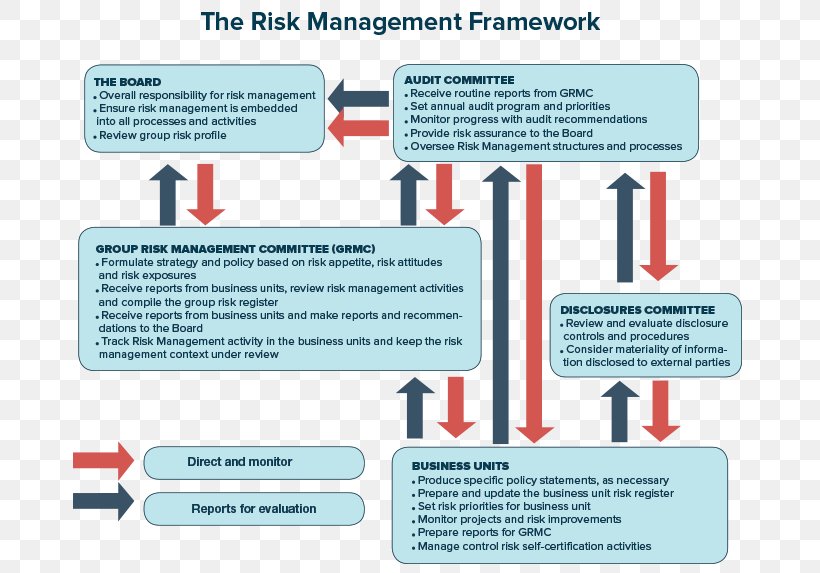Published by the International Organisation for Standardisation, ISO 31000:2009 is named as risk Management - Principles and Guidelines which takes a common sense approach to risk management. Regardless of type and size of the organization, the newly published risk management standard helps organization achieve its goals by managing risks in an effective and efficient manner.
With the introduction of ISO 31000, many similar international standards will be replaced. Of all replaced standards, AS/NZS 4360 is the most prominent one keeping in mind its exceptional success in Australia, New Zealand and other countries too. However, with a newer approach to view, verify and deal with risk - ISO 31000 promises a better and more efficient way of risk management.
This is the first article in an ongoing series that will introduce the concepts of risk management. The articles and series will be based on the ISO 31000 standard for risk management (at least the initial articles will) and the discussion about risk management in these articles can be applied in any industry and for any subject-finances, supply-chain management, brand reputation, talent. 2 – ISO 31000, Risk management ISO 31000, Risk management – 3 Why was it revised? All ISO standards are reviewed every five years and then revised if needed. This helps ensure they remain relevant, useful tools for the marketplace. A revised version of ISO 31000 was published in 2018 to take into account.
ISO 31000 and a Set of New Definitions As per ISO 31000, risk is 'The effect of uncertainty on objectives' whereas risk management is 'coordinated activities to direct and control and organization with regard to risk'. It again elaborates risk management framework as a 'set of components that provide the foundations and organizational arrangements for designing, implementing, monitoring, reviewing and continually improving risk management processes throughout the organization'. According to ISO 31000, risk management process
As per ISO 31000, risk is 'The effect of uncertainty on objectives' whereas risk management is 'coordinated activities to direct and control and organization with regard to risk'. It again elaborates risk management framework as a 'set of components that provide the foundations and organizational arrangements for designing, implementing, monitoring, reviewing and continually improving risk management processes throughout the organization'. According to ISO 31000, risk management process 
 is a 'systematic application of management policies, procedures and practices to the tasks of communication, consultation, establishing the context, identifying, analysing, evaluating, treating, monitoring and reviewing risk'.
is a 'systematic application of management policies, procedures and practices to the tasks of communication, consultation, establishing the context, identifying, analysing, evaluating, treating, monitoring and reviewing risk'. Key Principles of ISO 31000 ISO 31000 consists of 11 key principles which view risk management as an elementary process of generating success of the organization. These eleven principles can be regarded as the 'essential qualities' required for risk management.
Principle 1: Risk management creates and protects value
Principle 2: Risk management is an integral part of the organizational procedure
Principle 3: Risk management is part of decision making
Principle 4: Risk management explicitly addresses uncertainty
Principle 5: Risk management is systematic, structured and timely
Principle 6: Risk management is based on the best available information
Principle7: Risk management is tailored

Principle 8: Risk management takes human and cultural factors into account
Principle 9: Risk management is transparent and inclusive
Principle 10: Risk management is dynamic, iterative and responsive to change
Principle 11: Risk management facilitates continual improvement and enhancement of the organization
ISO 31000 and Enhanced Risk Management ISO 31000 acknowledges the importance of incessant improvement of risk management strategies. As per ISO 31000, the five features of enhanced risk management are:
- Continual improvement
- Full accountability for risks
- Application of risk management in all decision making
- Continual communications
- Full integration in the organization's governance structure
Iso 31000 Risk Management Process
In coming days, ISO 31000 will become an immensely important part of organizations which have not yet executed a formal and structured risk management framework. Is your company yet to implement a proactive risk management strategy? Is it struggling to effectively implement one? If yes, you are certainly seeking the need of professional help from ComplianceOnline.
ComplianceOnline with its effort to bring the knowledge to the door step of your company have collaborated with many industry experts who has led many successful ISO 31000 processes and have more than 20-30 years in various areas of expertise. They are with their immense knowledge and enormous experience conducting easy to understand and easy to attend webinars which are available in the format of recordings or CDs. So, what are you waiting for? Train your entire team interfacing with ISO 31000 and risk management with below mentioned webinars.
|
Iso 31000 Risk Management Framework
| Cookie | Duration | Description |
|---|---|---|
| cookielawinfo-checbox-analytics | 11 months | This cookie is set by GDPR Cookie Consent plugin. The cookie is used to store the user consent for the cookies in the category 'Analytics'. |
| cookielawinfo-checbox-functional | 11 months | The cookie is set by GDPR cookie consent to record the user consent for the cookies in the category 'Functional'. |
| cookielawinfo-checbox-others | 11 months | This cookie is set by GDPR Cookie Consent plugin. The cookie is used to store the user consent for the cookies in the category 'Other. |
| cookielawinfo-checkbox-necessary | 11 months | This cookie is set by GDPR Cookie Consent plugin. The cookies is used to store the user consent for the cookies in the category 'Necessary'. |
| cookielawinfo-checkbox-performance | 11 months | This cookie is set by GDPR Cookie Consent plugin. The cookie is used to store the user consent for the cookies in the category 'Performance'. |
| viewed_cookie_policy | 11 months | The cookie is set by the GDPR Cookie Consent plugin and is used to store whether or not user has consented to the use of cookies. It does not store any personal data. |